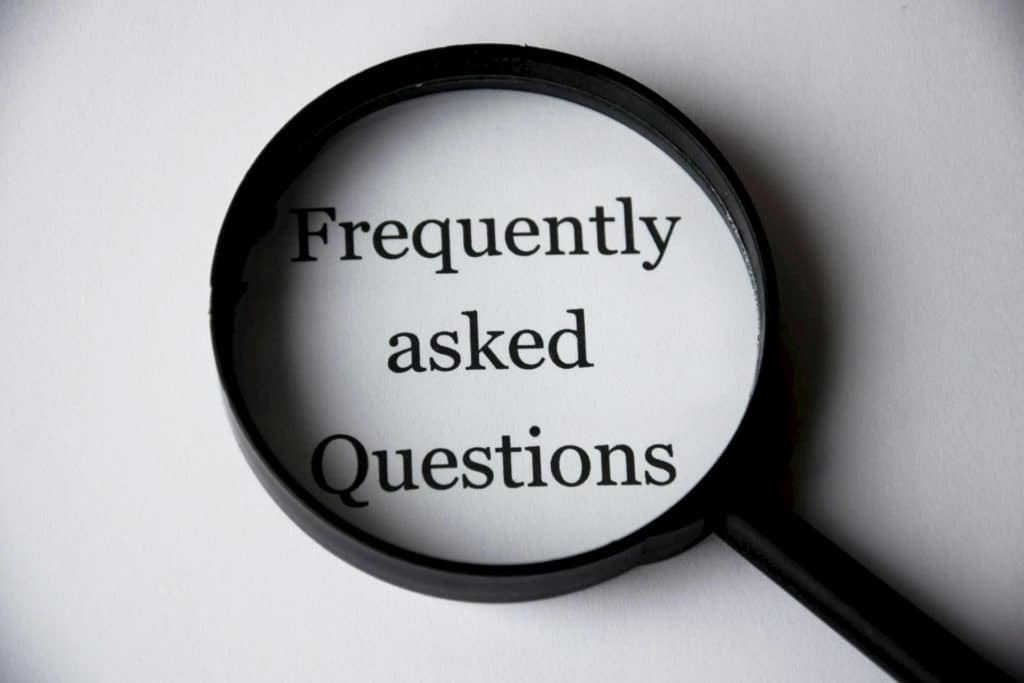Struggling to get your website noticed? You’re not alone. On-page SEO is a key player in climbing the search engine ranks. This article lays out 10 proven techniques to boost your site’s visibility.
Get ready for some game-changing tips!
Key Takeaways
- On-page SEO makes your site attractive to search engines and humans. Good practice gets you ahead of your competition without spending on ads.
- Using keywords right, like in titles, headings and throughout your content, gets more clicks and rankings.
- Page load times matter a lot for user experience and Google rankings. Mobile friendliness is also important since most searches are now from mobile.
- Internal linking guides visitors through your site smoothly, improves their experience and your site’s SEO.
- Adding structured data makes it easier for search engines to understand your content, may lead to better visibility in search results.
Download Our Free SEO Guide Here!
Importance of On-Page SEO
On-page SEO is like the secret sauce that makes your website tasty for Google and its friends. It’s all about making your site look good to both humans and search engine robots. Think of it as preparing a meal; you want it to be appealing, nutritious, and easy to eat for everyone at the table.
With 86.6% of folks using Google to find what they need, on-page SEO ensures your content doesn’t end up lost in the web’s vast ocean.
This crucial step in SEO helps you leapfrog over competitors in search results, drawing more eyes to your pages. It’s not just about jamming keywords into paragraphs or tweaking meta descriptions anymore.
Today, everything from how fast your page loads on smartphones to ensuring links guide visitors smoothly through your site plays a part in climbing those rankings. Imagine boosting organic traffic without spending every dime on ads – that’s the power of mastering on-page factors.

Top 10 On-Page SEO Techniques
Getting your website to rank higher is all about mastering the game of on-page SEO. From making sure your content hits the mark to fine-tuning the nuts and bolts of your web page’s architecture, these top 10 tactics are your secret weapons for standing out in search engine results.
Content Quality and Relevance
Good content is like gold in the SEO world. It must match what people are looking for during their buyer’s journey. This means your web pages should answer questions, solve problems, and offer something no one else does.
A solid piece of advice is to weave primary and related keywords throughout your text. But don’t just throw them in like confetti at a party; they need to fit smoothly into your sentences as if they were always meant to be there.
From my own experience writing for websites, I’ve learned that spending time on a post pays off. The average blogger might spend over 3 hours crafting a single article, ensuring it provides value and stands out from the crowd.
Incorporating SEO techniques into this process isn’t just about ticking boxes; it’s about enriching your content so that search engines recognize its worth. When you focus on creating original, informative pieces, you’re helping your audience and signaling to Google that your site deserves a spot on the first page of search results.
Page Titles Optimization
Making your page titles work hard is like giving your website a fast pass to the front of the search engine line. Keep them short, sweet, and under 60 characters to make sure they fit neatly in search results without getting cut off.
You want people to read them and know exactly what they’re clicking into. Think of it as naming your baby; it’s got to be special. Each title should stand out on its own, so no two are ever the same.
I learned this trick firsthand: put your main keyword at the beginning of your title for an added SEO boost. It’s like putting a spotlight on what’s important. And don’t just cram keywords in there; make it sound natural and inviting.
If you can throw in your brand name without making it awkward, even better – that’s how you play the game and win at Google rankings. So next time you’re crafting titles, think about hooking readers with clarity and charm while waving at search engines with those keywords they love so much.
Meta Descriptions
Writing a meta description is like baking cookies. Each cookie should give a taste without giving away the whole meal.
Keep it under 160 characters for the SERPs. Include your keyword so Google knows it’s relevant and make it compelling to boost CTR.
You wouldn’t serve the same cookie at every party. Don’t serve the same meta description on every page. It’s about making each one unique.
Update your meta descriptions during an SEO audit. This keeps them fresh for Google’s crawlers and visitors. Think of these as your website’s elevator pitch; you’ve got seconds to win someone over between floors.
So choose your words well and make them delicious enough to make anyone who sees them click through.
Heading Tags Usage
Using heading tags right makes your page shine in Google’s eyes. Think of the H1 tag as the main headline—it tells search engines what your page is about. Just like a newspaper headline grabs attention, your H1 tag should too, but you only get one per page, so make it count! Then there are the H2, H3, and even H4 tags.
They act like subheadings within a story, breaking down topics into bite-sized pieces. This not just helps readers glide through content but also gives search engines juicy keyword-rich context to chew on.
Make sure every heading counts by sprinkling in keywords that match user intent. But don’t stuff them! Imagine each header as a step on a staircase leading up to more detailed info—the clearer and more relevant each step is, the easier it is for both people and search bots to climb up to what they’re looking for.
This strategy boosts your pages’ rank while making content easy and enjoyable to digest for folks stopping by your site.
URL Structure
Crafting simple and consistent page URLs is like setting up breadcrumbs for search engines. It guides them right to your door. Including a keyword in your URL? That’s like rolling out the red carpet for both Google and your visitors.
This trick boosts SEO rankings and makes it clear what the page is about.
I’ve updated URLs during an SEO audit, dodging duplicate URLs like a pro. It felt like cleaning up a messy room where everything finally has its perfect spot. Search engines reward this clarity with better visibility, making every change worth the effort.
Keeping URLs neat and keyword-rich isn’t just good practice; it’s a strategy that sets you apart in the digital marketing game.
Image Optimization
Optimizing images is like giving your website a nitro boost. You want pictures that load fast and look sharp on any device. Pick the right size, format, and resolution to keep pages speedy.
Think of it as tuning a race car for peak performance; every pixel counts.
Adding alt text to each image helps search engines understand what’s on your page. Keep it short, sweet, and relevant. Imagine describing the picture to someone who can’t see it – use words that paint a clear image in their mind without overdoing the keywords.
Internal Linking
Internal linking is like a secret map on your website that guides Google’s web crawlers and your visitors. Imagine you’re a tour guide in your own little online city. You want to show off the best spots, right? By using internal links, you link arms with your visitors and walk them through the streets (pages) of your site.
Use keywords as signs pointing where to go next.
I once worked on a site that was a maze – pages everywhere but no clear path. After adding strategic internal links, it was like laying down a yellow brick road for both Google and people to follow.
We used anchor text rich with main keywords, turning overlooked alleys (low authority pages) into popular attractions. It wasn’t long before we saw more traffic sticking around longer, proving our site’s worth to Google without saying a word.
Mobile Responsiveness
Sites need to look good on phones, not just computers. Google loves sites that load fast on mobile devices. They even have a tool called PageSpeed Insights where you can test how fast your site loads on phones and tablets.
If your site is slow or looks weird on a phone, people will bail. I found this out the hard way when my own site took too long to load on smartphones. After I fixed it up for mobile, more people stuck around.
Making your site mobile-ready isn’t just about speed; it’s also about how easy it is to use on small screens. This means big buttons, text that can be read without zooming in and no side-scrolling.
Google calls this “mobile-first” design since more searches happen on mobile than anywhere else now. By making your site easy to use for thumb-scrollers, you’re helping both people and search engines find and love your content easier.
Page Speed
Fast loading times can make or break your website. Users love pages that load quickly. Google does too, especially on mobile devices. A speedy site keeps visitors happy and cuts down on people leaving out of frustration, known as bounce rates.
To pick up the pace, compress those hefty images, choose sleek themes that don’t bog down speed, and introduce lazy loading so users aren’t waiting forever for content to appear.
Think about using a Content Delivery Network (CDN) to spread your data around the world, making it quicker for people everywhere to access your site. It’s like opening multiple fast lanes for web traffic from various locations.
Keeping everything running smoothly requires regular checks with tools like Google’s PageSpeed Insights or other SEO tactics focused on creating an efficient online experience. This approach doesn’t just satisfy your audience; it also boosts your position in search results by meeting Core Web Vitals standards set by search engines for optimal performance.
Use of Structured Data
Making your site easy to understand for search engines is a big deal. That’s where structured data comes into play. It organizes information so Google can easily figure out what your website is about.
This setup helps in showing up better on search engine result pages. Think of it like putting labels on boxes before you move; it makes finding things way easier once you’re unpacking.
I tried adding structured data to my blog and saw a real difference. Pages started to rank higher because search engines could quickly tell what the content was about. Using tools like Google Search Console, I made sure every piece of my structured data was in perfect shape, enhancing my site’s architecture massively.
It felt like giving Google a map to the treasure that is my content, and boy, did they find it!

Additional On-Page SEO Tips
For even better SEO results, don’t stop at the basics. Dive deeper with these extra tricks to make your website shine even more. One key move is making sure your keywords perfectly match what people are looking for, without overdoing it – kind of like adding just the right amount of spice to a dish.
Also, keep an eye out for any copycat content on your site because search engines can spot duplicates faster than a kid spots ice cream truck music. Spruce up your pages further by using rich snippets; they’re like appetizers that entice people to click through from the search page.
And don’t forget about E-A-T (Expertise, Authoritativeness, Trustworthiness) principles which prove you know your stuff cold and can be trusted. Last but not least, getting folks hooked on your site boosts their time spent there – it’s all about creating a virtual space where visitors want to stick around and explore.
Keyword Optimization
Keyword optimization makes your page a magnet for search engines. First, explore keyword research tools like Ahrefs or UberSuggest. These treasure chests help you find the golden keywords your audience loves.
Next, sprinkle these keywords throughout your pages, especially at the top where they shine brightest. But watch out! Stuffing them in like too many cooks in the kitchen can do more harm than good.
I learned this tip personally: use primary and related words smoothly across your content. It’s like adding seasoning to a dish – just enough to make it delicious without overwhelming it.
Place main keywords early, then mix in semantic ones as you go along. This isn’t just about pleasing search engines; it’s also about making sure real people enjoy reading what you’ve written.
By doing so, my pages started ranking higher and attracting more clicks – proof that with the right approach, keyword optimization opens doors to better search engine visibility and user engagement.
Avoiding Duplicate Content
Avoiding duplicate content is like making sure no two snowflakes in your website’s winter are the same. Imagine having identical twins on different pages – search engines get confused about whom to show off first.
So, you update title tags, meta descriptions, and image alt text to give each page its own sparkle. Think of it as giving every room in your house a different color paint; it helps visitors know where they are and enjoy the uniqueness of each space.
I once had to comb through an entire site during an SEO audit, hunting for sneaky copycats hiding among product pages and landing pages. It felt like a detective game – spotting duplicates and rewriting them to stand out.
This task wasn’t just about boosting search engine rankings; it was about crafting an experience where every click brought something new. From this firsthand tidy-up mission, I learned that ensuring unique content isn’t just good SEO practice—it’s respecting your audience’s time by offering fresh views at every turn without recycling old news.
Rich Snippets Implementation
Rich Snippets give your site a boost in search engine results pages. They make your website pop by showing extra info like ratings and cook times right under the page title. To get started, add structured data to your site‘s code.
It’s like giving Google a map to understand what’s on your webpage better. This can include marking up articles, events, products, and reviews with specific codes that talk directly to search engines.
For example, if you run a cooking blog, you can use structured data to tell Google the ingredients list, cooking time, and calories of each recipe. When someone searches for a dish you’ve covered, they might see this useful info right away in the search results.
More clicks come from standing out like this. Plus, using tools such as Google Analytics helps track how well these snippets work at bringing people to your page and keeping them engaged.
E-A-T Principles
E-A-T stands for Expertise, Authoritativeness, and Trustworthiness. These are like gold for websites about health, finance, and safety. Imagine going to a doctor. You want someone who knows their stuff, has a good reputation, and tells you the truth.
Websites are the same. Google looks for these qualities to decide if your site is helpful for people searching sensitive topics.
To shine in E-A-T, create content that shows off what you know best. Make sure it’s clear you’re an expert talking. Use facts and examples to build confidence in your words. Share stories from real life to prove points.
This way, when someone reads your page on how to save money or stay healthy, they feel safe following your advice.
User Engagement Optimization
User engagement is all about keeping visitors engaged and taking action on your site. It’s key for SEO because it tells search engines your page meets user needs.
Think of it like a thumbs up from your visitors; the more they interact, click and stay the better your chances of ranking high. Google Search Console can show you how you’re doing by tracking performance in SERPs.
High bounce rates? That’s a red flag that says visitors aren’t finding what they’re looking for.
To make it better, optimise for conversions. Make it easy for visitors to navigate and find what they want quickly. Your site must be mobile friendly since most people browse on their phones these days.
Use clear calls to action and engaging content that answers questions or solves problems. That way you improve user experience and increase chance of turning visitors into customers or followers.
Keep an eye on those analytics through Google Search Workshop to see where you can tweak more.
Conclusion
Boost your website’s spot on the search engine stage with these top 10 on-page SEO secrets. Make every word count, from snappy titles to powerful meta descriptions. Don’t let slow pages and clunky design hold you back.
Focus on content that glues eyes to screens and turns visitors into fans. It’s a jungle out there in the digital world – so arm your site with the best tools for battle. With a bit of elbow grease and smart tweaks, watch as your pages climb up those rankings!

Frequently Asked Questions
-
What are some on-page SEO techniques to help my pages rank higher?On-page SEO techniques for higher rankings include content optimization, meta tags usage, and avoiding keyword stuffing. Also, your site should be optimized for search engines with a responsive design and user experience (UX) in mind.
-
How does link building impact my website’s ranking?Link building can boost your credibility and improve click-through rates by passing “link juice” from high-quality sites via backlinks.
-
Why is it crucial to optimize images on my website?Image optimization plays an essential role in SEO strategy! Using alt tags or alt attributes along with descriptive filenames helps web-crawlers understand the image content better which could lead to better rankings.
-
Can CDNs and CSS affect my webpage's SEO performance?Absolutely! Content Delivery Networks (CDNs) speed up page loading times while clean CSS ensures smooth crawling of your site by search engine bots – both contributing towards a great user experience.
-
How can I make sure that the content on my website matches the search intent of my target audience?High-quality content that aligns with keyword analysis results will ensure you meet your audience's search intent effectively - no need for clickbait here!
-
What is off-page SEO, and how does it compare to on-page SEO tactics?Off-page seo involves external linking strategies like backlinks from social media platforms or other websites enhancing your site’s authority whereas On-Page focuses more on elements within your own pages such as URL optimization, meta-description etc.

















0 Comments